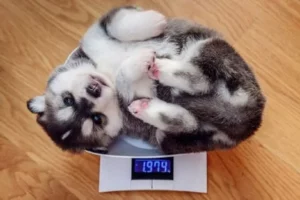Diabetes mellitus is a chronic condition of glucose metabolism brought on by a lack of insulin, either in an absolute or relative deficiency of insulin. It is a disorder that develops when the body is unable to utilize glucose, a form of sugar, normally. The primary fuel for the body’s cells is glucose. Insulin, a hormone produced by the pancreas, is principally responsible for regulating blood glucose levels. Sugars are one of the nutrients from the meal that are absorbed when it moves through the intestines during digestion. The sugars are introduced into the intestinal lining cells where they are transformed into simple sugars, such as glucose.
How does diabetes develop?
Glucose must be transported from the circulation to the cells with the help of insulin, the hormone insulin must be created by beta cells in the pancreas. Some hormones, such as cortisol can decrease the sensitivity of tissues to insulin, and an abundance of adipocytes (fat cells), making more insulin needed to achieve the same results. When there is “less” insulin present, blood glucose levels rise and cells are unable to absorb glucose for energy.
Hyperglycemia, a condition in which glucose builds up to high levels in the blood, occurs when there is insufficient insulin or when the body cannot use the insulin. When the blood sugar reaches a specific level, it overflows into the urine (this is known as glucosuria) and pulls in significant amounts of water. Due to this, diabetic dogs usually consume more water and urine more frequently and extensively.
Diabetes Mellitus in Dogs and Cats
Diabetes in people is categorized as Type I or Type II. Type I happens when there is insufficient insulin produced by the pancreas, and type II occurs when the body is unable to react correctly to the insulin produced by the pancreas. The distinction between Type I and Type II diabetes in dogs is less distinct than it is in people, despite the fact that it is frequently allocated either. One in 300 patients with dogs and cats has diabetes mellitus, a common endocrine condition.
Dogs and cats can get diabetes at any age. However, diabetic dogs often range in age from 4 to 14 years, with the majority being identified between 7 and 10 years of age. The frequency in dogs is roughly 1 in 500. Female dogs are three times more likely than male dogs to receive a diagnosis between the ages of 7-9 years. Similar to Type I diabetes in people, dogs are more prone to develop insulin-dependent diabetes.
As noted previously, one in 200 cats is affected. Male cats are more than twice as likely to be diagnosed between the ages of 10 and 13 than are female cats. Non-insulin-dependent diabetes, which is identical to Type II in humans, is more common in cats. This doesn’t necessarily indicate that cats don’t need insulin.
“Several dog breeds, such as Australian terriers, Schnauzers, Dachshunds, Poodles, Keeshonds, and Samoyeds, may be susceptible to diabetes.”
What Leads to Diabetes in Canines and Felines?
Diabetes in dogs and cats can have several different causes. It is a hereditary illness that affects some pet; breeds including Australian terriers, and more. Diabetes is far more likely to occur in those who are obese. In addition to developing diabetes as they age, dogs and cats may also develop other illnesses like hyperthyroidism (an overactive thyroid gland in cats) or hyperadrenocorticism (an overactive thyroid gland in dogs), pancreatitis, heart disease, kidney disease, urinary tract infections, skin infections, and infections of the kidneys. Diabetes is also at risk with long-term usage of drugs containing corticosteroids.
Clinical Finings
Diabetes frequently develops slowly, and its clinical course is extended. Osmotic diuresis is principally responsible for abnormalities in water metabolism. In dogs, the renal glucose threshold is 180 mg/dL, but in cats, it is 280 mg/dL.
Some common clinical features, Your pet needs to be evaluated by a veterinarian if you see any of the following symptoms. The greater chance your pet has of living a longer, healthier life the sooner the diagnosis.
- polyuria
- polydipsia
- polyphagia
- lose weight
- cataracts (dog)
- Chronic or recurring infections (including skin infections and urinary infections
- Additional signs may include vomiting, poor coat condition, and abnormal gait in cats.
Up to 50% of cats and some dogs exhibit reduced appetite. Hepatomegaly, lethargy, cataract development in dogs, and diabetic neuropathy are some more clinical symptoms (mainly in cats). Typically, symptoms develop gradually over weeks or months.
How is Diabetes Diagnosed?
Diagnosis of diabetes mellitus is based on glycosuria and chronic fasting hyperglycemia. Blood glucose levels in dogs and cats should range between 75 and 120 mg/dL during a fast.
Stress-induced hyperglycemia is a common issue in cats, and the diagnosis may need repeated blood and urine tests. The distinction between stress-induced hyperglycemia and diabetes mellitus may be made with the help of serum fructosamine measurements. The levels of fructosamine are normal in cases of stress-induced hyperglycemia. Drugs or conditions that increase the risk of developing diabetes should always be checked for.
How can a vet identify diabetes?
To check for increased glucose levels in the blood and urine, your veterinarian will probably run blood and urine tests. Additional tests may periodically be required for confirmation or to check for disorders that are present but not yet manifesting symptoms of diabetes or that may do so. To rule out a urinary tract infection, a urine culture may be advised.
Veterinary Diabetes Treatment for Dogs and Cats
In general, dogs are more likely to develop insulin-dependent diabetes (similar to Type I in humans), cats are more likely to develop non-insulin-dependent diabetes (similar to Type II in humans), and both dogs and cats have been reported to develop Type III diabetes, which is associated with high hormone concentrations that cause insulin resistance.
Insulin injections are the backbone of therapy for both dogs and cats with clinical indications of illness. The most often utilized insulins in cats are glargine and PZI. The first-line insulins used in treating canines include Lente, NPH, and Vetsulin. Each one differs in terms of how long it stays in the bloodstream, how simple it is for owners to access, and a reasonable price. Your veterinarian will instruct you on how to administer the extremely little needle-based insulin injections, which are often very well tolerated by the animal.
Regular check-ups, blood and urine tests, and observation of your pet’s weight, hunger, drinking, and nutrition are necessary for successful diabetic management.
Dietary Management
The condition must be initially treated with insulin because diet and weight loss alone will not manage it. The majority of dogs need two doses of insulin every day.
- In order to control diabetes in dogs, a diet modification to one high in complex carbohydrates and low in fat is often used.
- Despite the fact that cats frequently develop an insulin-independent type of diabetes, they frequently still need insulin for control. Change your cat’s diet to one that is high in protein, low in carbohydrates, ideally canned, and concentrate on better weight control.
- For both dogs and cats, daily exercise is strongly advised, however, it might be challenging to adopt a daily fitness routine with cats. Discuss with your veterinarian about the best exercise regimen for your pet taking into account things like age, weight, and general health.

![01-Cats & Dogs – Diabetic Pets [1140 × 500px] 01-Cats & Dogs - Diabetic Pets [1140 × 500px]](https://ivhq8.com/wp-content/uploads/elementor/thumbs/Cats-Dogs-Diabetic-Pets-q0u439vg6p7tb2hmnqfc8ehcjiwl01bzi2k9yninwo.jpg)


